While only a remnant today, South America's Atlantic Forest continues to hold staggering birdlife. With help from World Land Trust, conservationists have been restoring degraded forest patches in Brazil, and now birds are returning. REGUA's Lee Dingain explains how you can support the Plant a Tree programme.
The Atlantic Forest of South America is one of the world's top biodiversity hot-spots. Separated from the Amazon rainforest since the last glaciation by vast Caatinga shrubland and Cerrado savanna, 92% of the Atlantic Forest lies within Brazil. It stretches 3,000 km along the east coast – a latitudinal range of 29 degrees – extending into tropical and subtropical regions and inland into eastern Paraguay and north-east Argentina.
Encompassing the 1,500-km-long Serra do Mar mountain range that runs parallel with the coast, the Atlantic Forest ranges from sea level to 2,275 m in elevation. Prevailing easterly winds deposit 4,000 mm of relief rainfall annually on the windward coastal slope, four times the amount that falls on the dry interior plateau. This varied geography has given rise to a complex, highly diverse range of habitats within the Atlantic Forest, including humid coastal rainforest, dry semi-deciduous forest, montane Campo Rupestre grassland, coastal Restinga forest and mangroves.
The resulting rich species diversity has exceptionally high levels of endemism. An estimated 31% of all fauna, flora and fungi species in the Atlantic Forest occur nowhere else, and of almost 1,000 bird species found here, 215-223 (depending on the taxonomy followed) are endemic to the Atlantic Forest.
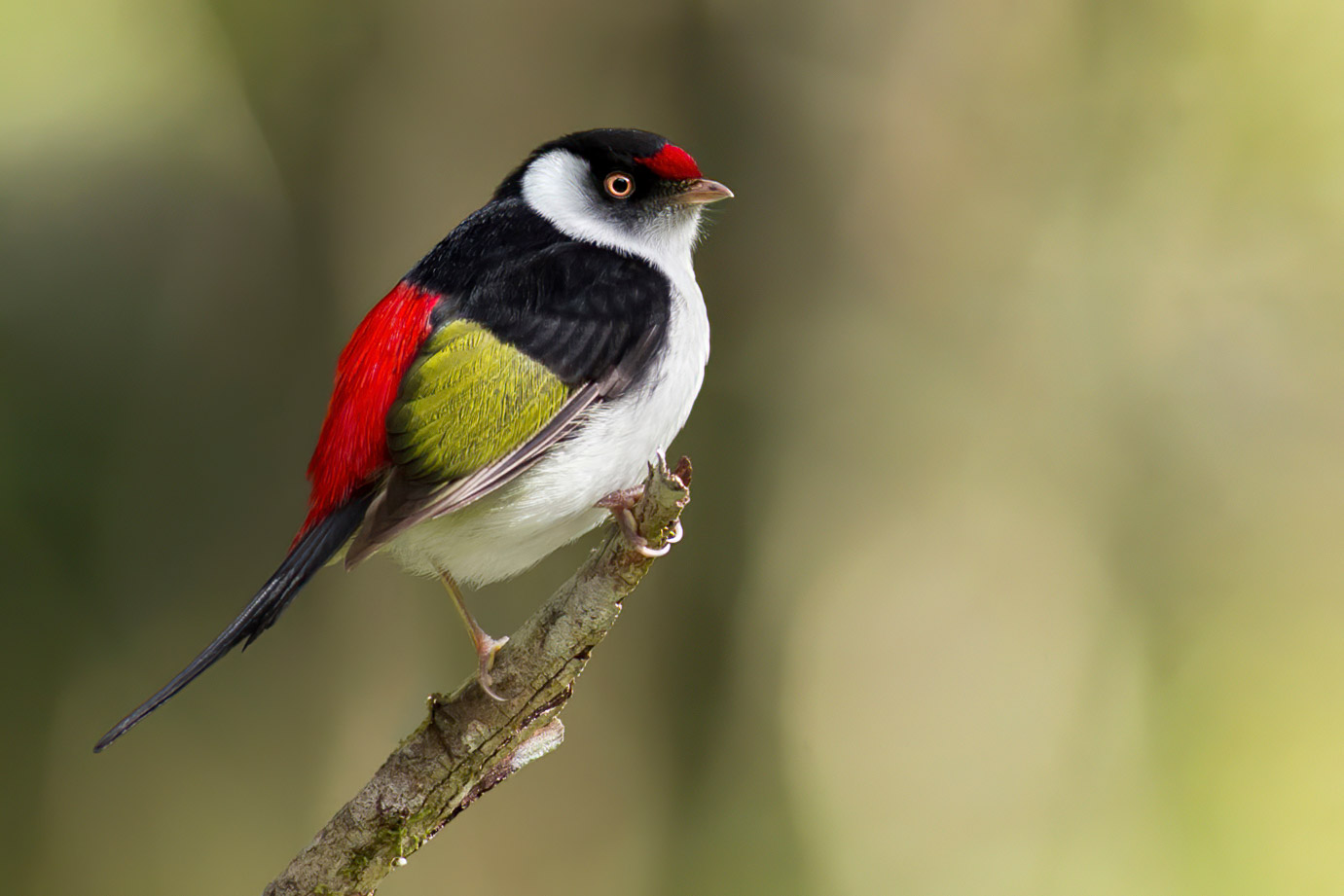
Pin-tailed Manakin is one of 118 Atlantic Forest endemics found at REGUA (Daniel and Gabriel Mello / www.irmaosmello.com.br).
Threats to the unique birdlife
The Atlantic Forest is one of the world's most threatened biomes. Once the second-largest rainforest in South America, covering 150 million ha (equal to the size of Iran), five centuries of deforestation since the time of European colonisation – for timber, firewood, charcoal, coffee, cattle pasture, sugar cane and urbanisation – has left little of the original forest cover standing. Most estimates of how much forest remains range from 7-16%, the bulk of which are secondary forests in small, isolated fragments on the steeper slopes. This destruction is compounded by illegal hunting and poaching, placing more pressure on the biome's biodiversity.
Many birds restricted to the Atlantic Forest have small ranges, so unsurprisingly it contains a high number of globally threatened species. More than half of the 166 threatened birds in Brazil occur here, and the International Union for Conservation of Nature (IUCN) Red List recognises 31% of Atlantic Forest endemics as threatened and another 19% as Near Threatened.
Fifteen Atlantic Forest endemics are now Critically Endangered and rapidly declining. The rediscovered Cherry-throated Tanager may number just 12 individuals, and Stresemann's Bristlefront, totalling six birds in 2011, is down to one known female. Alagoas Curassow is now extinct in the wild, and in 2019 two other Atlantic Forest endemics were declared extinct – Alagoas Foliage-gleaner, considered relatively easy to find in 1979, and Cryptic Treehunter.
Continued forest loss, degradation and poaching are the primary drivers of these declines and extinctions, despite legal protection of the Atlantic Forest since 1965. With only 9% of the remaining Atlantic Forest within protected areas such as nature reserves, expanding the protection and restoration of land is vital to prevent more of the biome's avian diversity from vanishing.
In south-east Brazil, the Guapiaçu Ecological Reserve, better known as REGUA, is doing just that. Located in the Guapiaçu watershed 80 km north-east of Rio de Janeiro, REGUA sits on the coastal slope of the Serra dos Órgãos mountains, part of the Serra do Mar range. With continuous forest from 35-2,000 m above sea level, habitats protected by REGUA range from primary and secondary rainforest to wetlands and wet pasture.
REGUA is home to a remarkable 486 species of bird, including 63 which are endemic to Brazil and 118 Atlantic Forest endemics. Twelve globally threatened species occur here, including White-necked Hawk, Brown-backed Parrotlet, Golden-tailed Parrotlet, Salvadori's Antwren, Russet-winged Spadebill and White-bearded Antshrike, with a further 29 Near Threatened species also present.
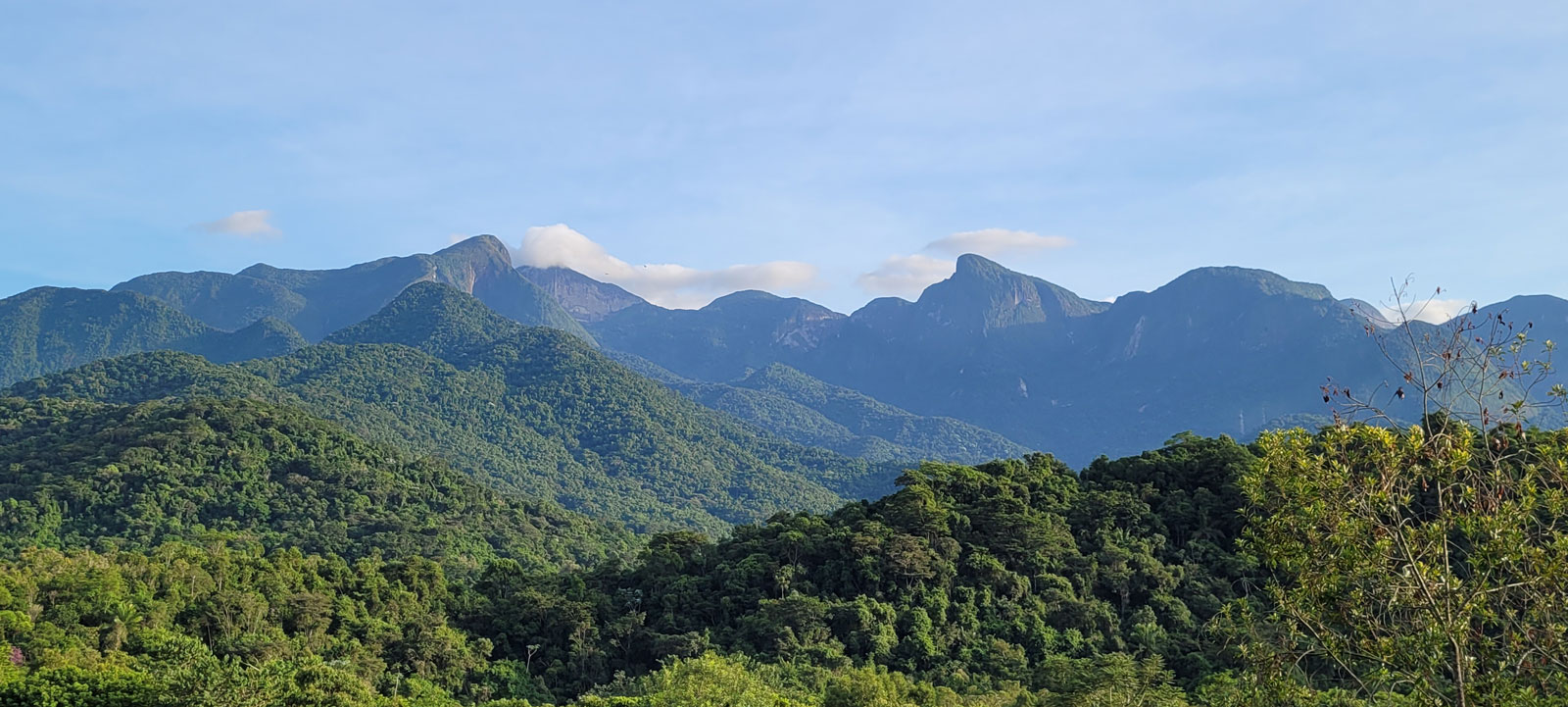
REGUA is one of few Atlantic Forest areas remaining with continuous forest from 35-2,000 m above sea level (Lee Dingain).
Restoring a dwindling ecosystem
Aware of the unique birdlife at stake, REGUA has been working hard to protect its dwindling habitat. Over the last 20 years, the reserve has expanded to protect 12,600 ha of forest, comprising land owned by REGUA and land under management agreements. But our work is far from finished. Road improvements over the last decade have made the Guapiaçu valley more accessible, resulting in rapid urbanisation and clearance of small areas of forest to make way for holiday homes. With support from charities like WLT, REGUA has been able to purchase land as it becomes available to add to the reserve.
As well as protecting the remaining forest, REGUA purchases degraded land to reforest and connect isolated forest fragments. Where forest has been cleared, a climax species of grass, Imperata brasiliensis, forms a dense sward, preventing tree seeds from germinating. So while some degraded areas at REGUA have been allowed to rewild, habitat restoration is the only way to regain forest cover and connect existing forest fragments.
The process begins with the collection of seeds of native pioneer and climax tree species from the forest by REGUA staff, which are then grown in REGUA's tree nursery before being planted out during the wet season. Since 2004 REGUA has restored 445 ha of forest and 17.5 ha of endemic Tabebuia cassinoides swamps and wetland, planting more than 662,000 trees of 180 species. The result has been a complete transformation of the lowlands on the reserve.
When I first visited REGUA in 2006 the new visitor lodge overlooked cattle pasture, arable fields and grassy hills weathered by soil creep and gully erosion. With the nearest forest a kilometre away, the avifauna was dominated by open-country species such as Yellowish Pipit, Grassland Sparrow, Rufous Hornero, White Woodpecker and Scissor-tailed Nightjar.
With funding from WLT, REGUA reforested this lowland area in just five years. Today this view looks out across a young secondary forest covering 50 ha, surrounding a mosaic of restored swamps, lakes and reedbeds. With it, forest-interior endemics are returning, including Rufous-capped Motmot, Crescent-chested Puffbird, Black-cheeked Gnateater, Grey-hooded Attila, Red-necked Tanager and Azure-shouldered Tanager. Tree by tree, £5 donation by £5 donation, supporters of WLT's Plant a Tree programme have been funding this crucial restoration work.
Restoration of forest in the lowlands not only benefits Atlantic Forest endemics, but also creates important feeding areas for species that are altitudinal migrants. Two rare REGUA specialities, Brazilian Laniisoma and Black-legged Dacnis, both breed at higher elevations, moving to the lowlands for the winter. These Near Threatened species are notoriously difficult to see, but as a result of reforestation championed by Plant a Tree supporters at REGUA, both are now relatively easy to find in their regular wintering grounds in recently planted secondary forest.
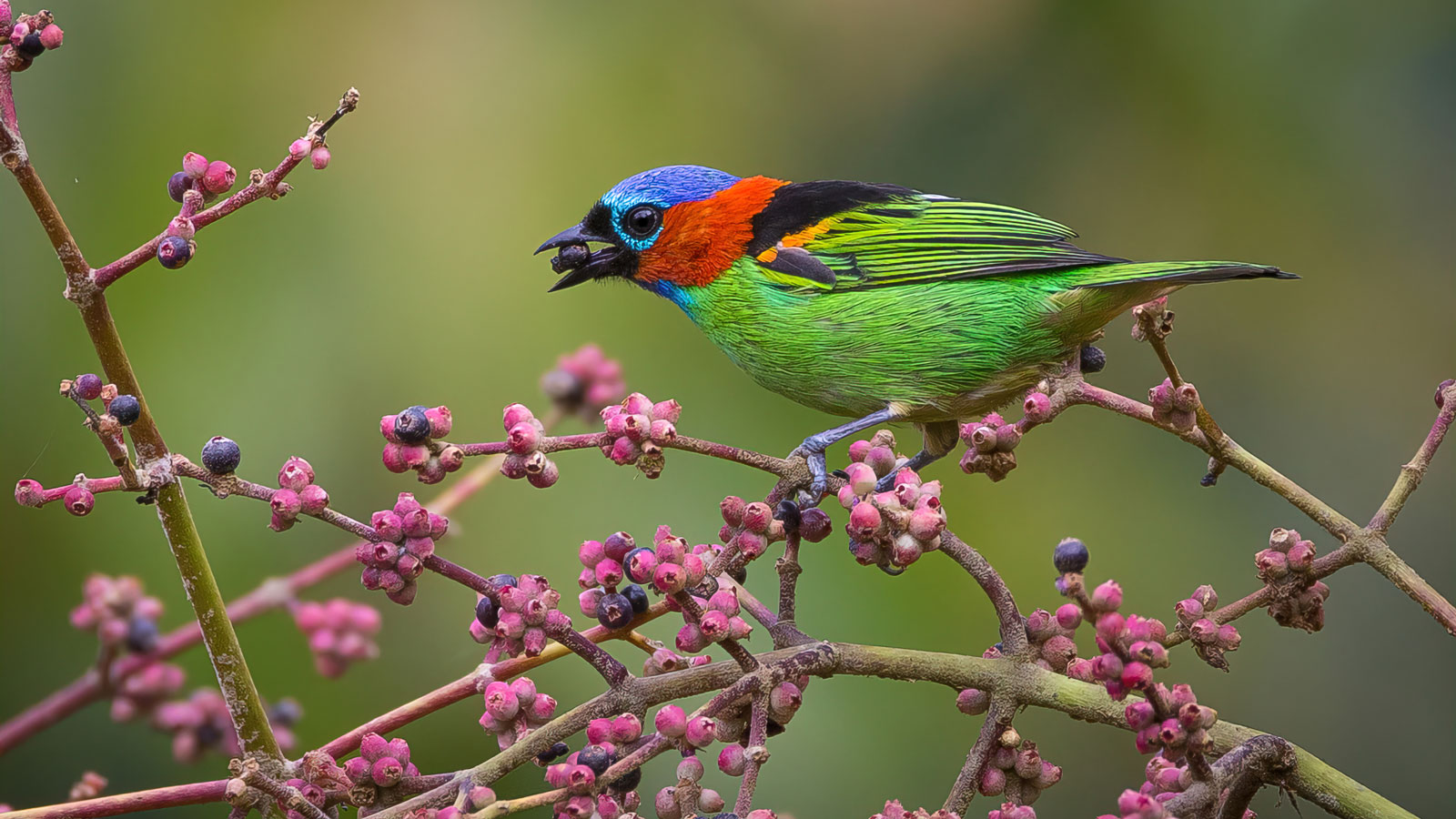
Red-necked Tanager is a widespread species in the Atlantic Forest (Daniel and Gabriel Mello / www.irmaosmello.com.br).
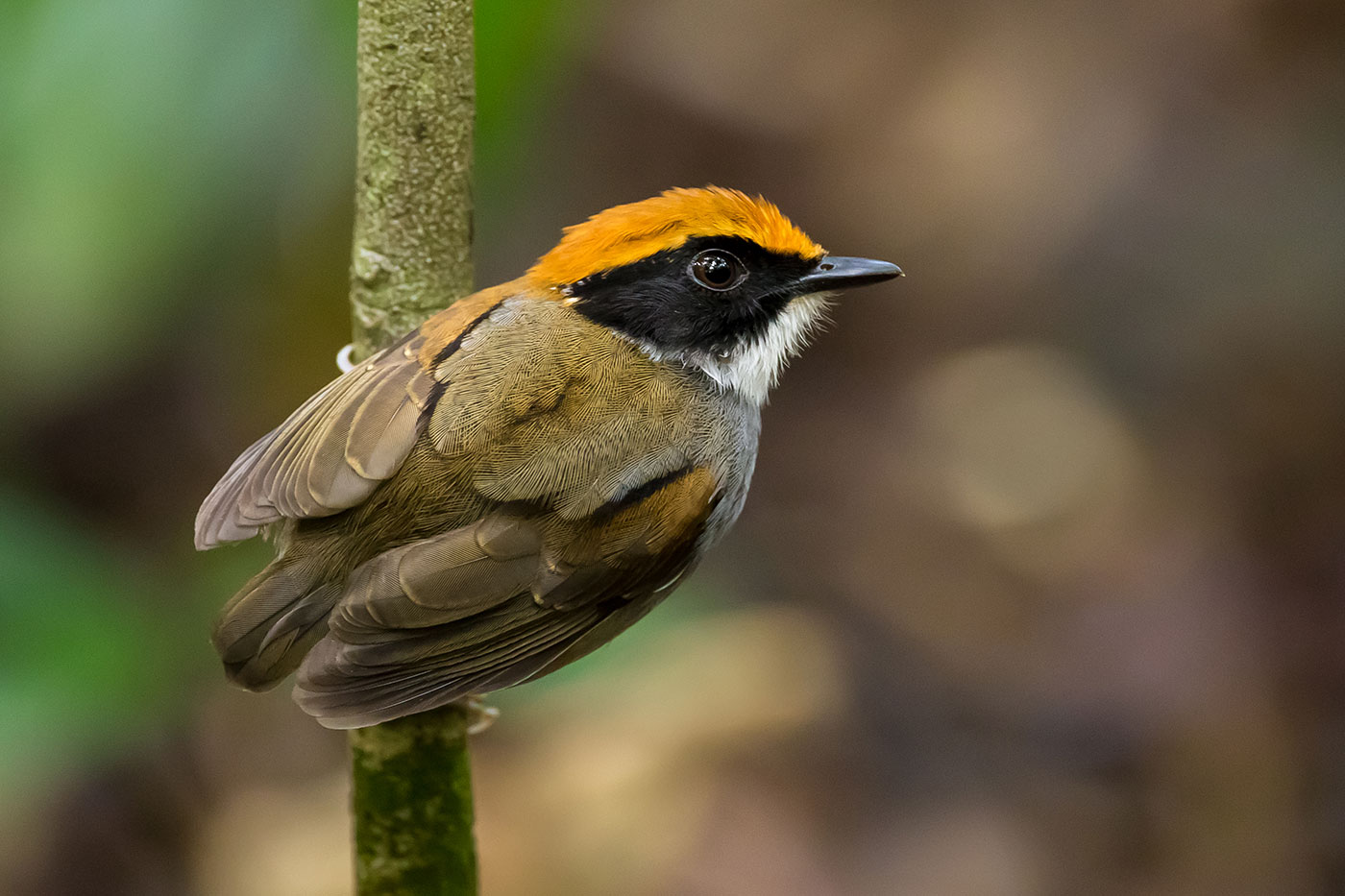
Black-cheeked Gnateater is an Atlantic Forest endemic benefitting from reforestation at REGUA (Daniel and Gabriel Mello / www.irmaosmello.com.br).
Help support crucial reforestation work
As iconic and spectacular as it may be, REGUA's birdlife is not alone in benefitting from the restoration work being carried out in the Guapiaçu watershed. Birds are excellent indicators of biodiversity within an ecosystem. Occupying high trophic levels and often sensitive to environmental change, trends in bird populations tend to reflect changes in populations of other taxa. Trail cameras positioned in reforested areas at REGUA bear this out, with footage showing a wide range of mammals, from herbivores such as Lowland Paca and the endangered Brazilian Cottontail, to apex predators such as Puma and Ocelot.
Essential to this success has been REGUA's education programme for local communities and the dedicated team of rangers that patrols the forest daily to deter hunting. The resulting shift in local attitudes towards protecting the remaining forest and its biodiversity has not only allowed nature to flourish, but also paved the way for the successful reintroduction of the threatened and previously hunted Lowland Tapir. A keystone species, the tapir helps to restore the structure and diversity of the forest and aid succession, along with other seed dispersers such as Rusty-margined Guan that have returned naturally.
REGUA is a resounding conservation success story for the Atlantic Forest and its biodiversity. But as human-made threats continue to mount on what little remains of this endangered biome, reforestation work must continue at a scale to safeguard the Atlantic Forest's unique and threatened avifauna – a cause that Birdwatch readers can play a key part in today.
Visit www.worldlandtrust.org/appeals/plant-a-tree to discover what your donations to WLT's Plant a Tree programme will do to restore bird habitat in Brazil and beyond, at £5 per native tree.
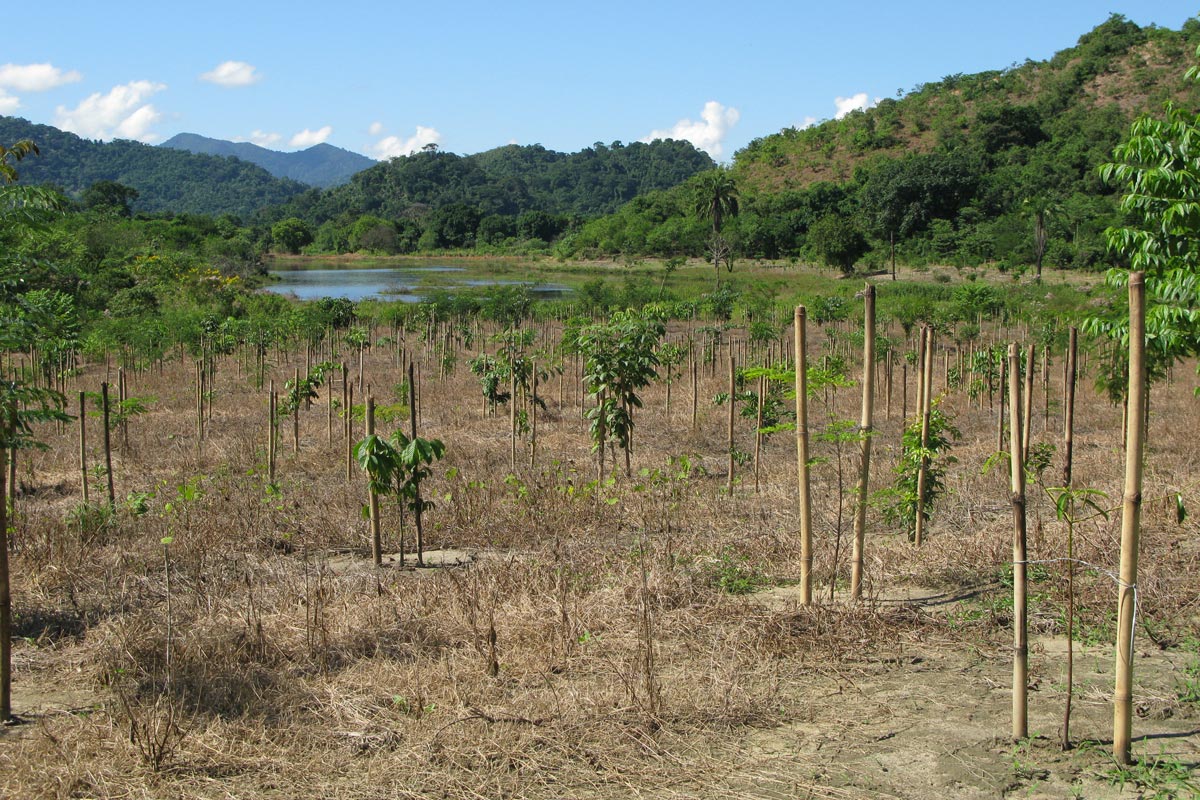
Some of the Atlantic Forest trees planted on a 50-ha plot at REGUA since 2004 with funding from WLT (Rachel Walls).
Acknowledgements
Many thanks to Daniel Mello, Gabriel Mello, Guilherme Serpa and Rachel Walls for permission to use their excellent photographs, and to Sue Healey for proofing the manuscript.
This article was originally published in the July 2022 issue of Birdwatch magazine.

